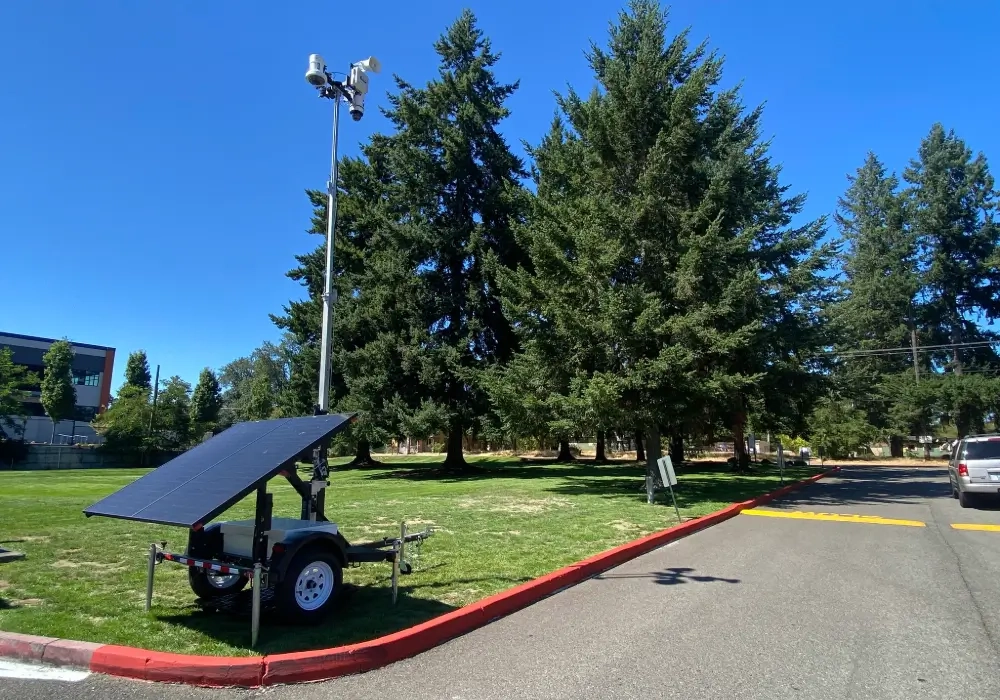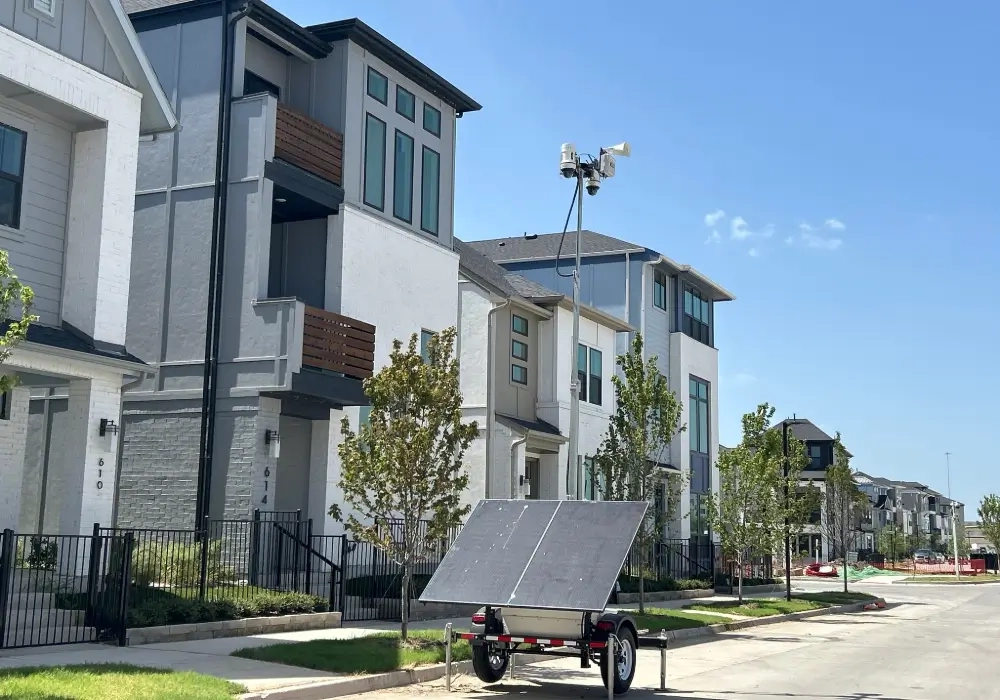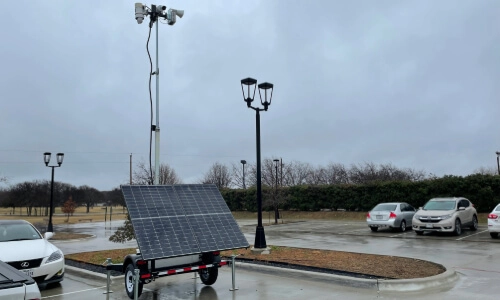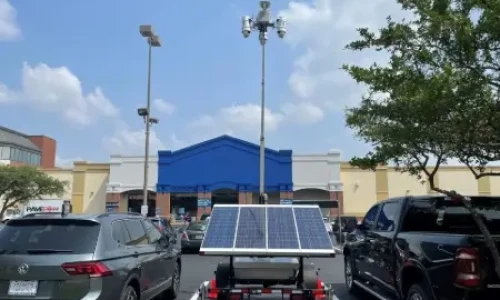Campus safety has been a topic of much discussion over the last decade and continues to be one of the biggest challenges for schools and universities across the US.
This year alone, there have been 33 deaths and injuries caused from school shootings, with other growing security risks leading campuses to become overwhelmed on how best to manage this.
Many are seeking external support as a way of boosting the on-site security, but in order to ensure effective criminal prevention, the surveillance measures in place must be able to manage the challenges you face.
Using our knowledge and experience from over the years, we delve deeper into the world of campus crime, the main security challenges affecting education systems, and preventative measures to combat them.
Key Statistics Around Campus Crime
From the most recent statistics of Campus Safety and Security show there were 41,801 criminal offenses reported across 5,673 institutions with 10,307 campuses.
This is the highest number of reported incidents since 2011, showing the upward trend and heavy challenges many campuses are experiencing.
Of this figure, 19,189 of the crimes reported were categorized under the Violence Against Women Act (VAWA) and 2,676 were hate crimes, where individuals are targeted based on factors such as race, ethnicity, religion, sexual orientation, gender, gender identity, or disability.
Overall, from these statistics, campus crime rose by 7.7% from the previous year, and is showing no signs of slowing down.
These statistics only provide a brief insight into the challenges campuses face, and there are many other security risks educational institutions need to be aware of.
Main Security Challenges Faced by Campuses
Below outlines 7 of the main security challenges affecting campuses and the dangers they bring to staff and student’s safety:
Unauthorized Access on Campus
Campuses often span over large spaces consisting of various surface types, and this makes them vulnerable to unauthorized access.
Although many campuses will have pre-existing measures in place that aim to defend against this, tight budgets and stretched resources, often mean these are outdated and no longer suffice for their security needs.
This can create gaps in security in which unauthorized individuals will utilize to gain access to the campus.
Upon entry, those individuals present great danger to staff and students as campuses cannot predict their behavior or plan of attack.
And with the valuable nature of personal and intellectual property held on university land and in accommodations, this is attractive to attackers.
Presence of Weapons
The combination of having a large, concentrated number of staff and students, potential for firearms to be present, and unpredictable nature of behavior, make campuses common targets for weapon-related incidents.
Over the years, there have been dozens of reports surrounding college shootings or mass violence.
Although the reasons behind each attack will be individual to each incident, the presence of such numbers of staff and students in one space opens that vulnerability to those looking to create as much damage in one time.
However, it seems that these weapon-based attacks on campuses could also be affecting the potential presence of weapons on campus, as students look to equip themselves out of protection.
It’s also been found that between 9% and 12% of 18 to 23 year olds had access to a sword, machete or combat knife.
This worrying statistic shows the availability of weapons for students, of whom may have these present on campus.
Drug-Related Crime
Last year, 30% of students admitted to experimenting with drugs like marijuana, stimulants, and prescription medication, indicating a normalization of drug-culture on campus.
As well as affecting students’ performances and mental health, drugs can lead to an increase in crime like violence, theft, and property damage. Not to mention that both possessing and dealing drugs is a crime in itself.
Drug-related crime is becoming increasingly common in colleges due to a number of reasons, including:
- Peer pressure and social influence
- Increase in mental health illnesses and poor wellbeing
- Academic stress and pressure
- More independence and freedom
- Increase in risk-taking behavior
- Easier accessibility and availability to substances
For many college students experiencing independence for the first time, drugs can be appealing, however, for campuses themselves, this uptake in illegal substances only spells trouble with students and staffs’ safety.
With such a vast area to cover, managing this issue is difficult, especially at night where drugs will be most prevalent.
Vandalism and Property Damage
Many campuses' open layouts make them easily accessible to potential offenders looking to cause damage to property or commit vandalism.
The reasons behind vandalism and property damage will vary, whether it’s part of a protest or someone simply aiming to cause disruption.
And the dangers for this don’t just exist externally, students themselves are commonly involved in such crime.
Having a high, concentrated number of young adults runs the risk of property damage and vandalism due to their new independence, potential tensions, and varying perception of public property.
The main challenge for campuses with property damage and vandalism is the large cleanup costs and repair fees involved in resolving the matter.
Violence
Violence amongst students can develop based on numerous factors, including drug use, transition to independence, societal norms, and high stress environment.
For most young adults attending college, they will be experiencing many firsts with both their personal and educational lives, and with this, they are navigating how to manage these situations.
This navigational time brings a heightened risk of violence as there’s a greater chance for hostile environments to occur and for impulses to takeover.
Acts of violence cover crimes from sexual violence to assault, and with such high numbers of students, instances of violence is steadily becoming the norm for campuses.
Lack of Surveillance and Monitoring
The sheer size of campuses and stretched budgets means that for many schools and colleges, even if they have systems in place, they cannot manage every area on-site and have high scalability costs.
These systems tend to follow traditional methods, providing outdated technology and offering only a fixed view of a location.
Lack of surveillance and monitoring on campus has also been linked to privacy concerns from students and staff.
Balancing the line between providing protection and maintaining privacy for students has also been up for much discussion. At times, this has prevented the deployment of particular security measures or created distrust between students and the educational institution.
This lack of surveillance and monitoring in place makes it easier for security breaches to occur and crimes to be committed on campus, without anyone knowing.
Overall, the logistical challenges, technological limitations from outdated systems, costs, and privacy concerns all contribute to the lack of surveillance and monitoring presence on campus.

How Can Campuses Increase Security to Prevent Crime?
Enhancing the safety of students, staff, and faculty on campus involves enhancing the security procedures in place to prevent and manage the challenges presented to it.
Various educational institutions have already taken significant steps to do this by completing comprehensive screenings of staff and visitors, issuing identification cards, and enforcing a mandatory sign-in process for guests.
Some have also expanded their student services to provide increased support and intervention resources, further contributing to a safer campus environment.
Educational programmes and talks are particularly popular for spreading awareness on gun violence, drug use, and sexual violence, all prominent issues for most campuses.
These aim to teach students about the dangers of them, offer general information and guidance, and provide a safe space for discussion.
However, as much as these measures help with educating students and ensuring strong access control, increasing physical security is often the best route for campuses to deter crime.
Physical security options include, security guard patrols, perimeter fencing, and video surveillance.
Most popularly, many colleges are turning to mobile video surveillance systems due to their cost-effectiveness, large coverage, and proactive crime prevention approach.
However, with tight budgets and high demand for effective crime prevention, it’s vital you establish the best surveillance solution for you and your campus’ needs.
Established Campus Parking Lot Security: LotGuard
At LotGuard, we’ve always found that parking lots tend to be forgotten about or not utilized to the best extent when it comes to security, however, we feel this is where campus security should begin.
Many crimes tend to happen on the external areas of a campus, therefore it’s important to have coverage of this, and your parking lot can provide the perfect opportunity for this.
With the LotGuard PRO Surveillance Trailer, you can slot these units into one parking space, creating next to no difference on the functionality of your parking lot.
They also provide several benefits to campus security and safety. Below outlines these in more detail:
|
Feature |
Advantages to Campus Safety and Security |
|
Visual and Audio Deterrents (Live Voice-Down Audio Challenges, sirens, and 20 ft mast) |
Helps deter crime before it happens or disperse an escalating incidents |
|
Rapid, Relocatable Setup |
Provides near-immediate coverage, no waiting weeks or months for installation. Can be moved by yourself to new locations within your parking lot to cover any new or emerging threats, providing enhanced protection to staff and students. |
|
Complete Power Autonomy |
Works completely independently, minimizing downtime, and providing continuous coverage of your campus and its parking lot. |
|
Allows for proactive crime prevention off-site, meaning even when staff or in-person security are not present, action can still be taken against any suspicious behavior or active incidents. |
|
|
Smart Analytics and Integrations (Like LPR Cameras) |
Helps to customize your security specifically to your campus to increase its effectiveness. For example, capturing unauthorized vehicles, as well as individuals. |
|
Remote Connectivity |
Allows you to have access to the live and recorded video stream of your site, so that you can respond as needed with any additional security or in line with your policies. |
|
Evidence Gathering and Storing Software |
Records 24/7 and ensures footage is stored safely for the correct period of time, helping your campus identify any individuals involved and take legal action if required. |
Designed to provide cost-effective, convenient surveillance and monitoring of your parking lot, and surrounding campus, our solutions provide expanded coverage whilst working as a visible criminal deterrent against crime.
Learn more on LotGuard by getting in touch with one of our experts today!
Contents
[hide]Related news
Contact Us
Request a Quote for LotGuard
Ready to learn more about how LotGuard can protect your Parking Lots and Properties? Get in touch today for a free quote.




